
Providers say removal generated little customer reaction Page 8
Whittier celebrates 140 years Elementary school gets new road sign Page 10


Providers say removal generated little customer reaction Page 8
Whittier celebrates 140 years Elementary school gets new road sign Page 10
By Tom Haraldsen | t.haraldsen@mycityjournals.com
The medical facility in West Valley City is set to open its initial phase in 2028.
Theevent was ceremonial, but the celebration of it and the promise it brings were both very real. On June 13, ground was broken for the new University of Utah hospital and health clinic in West Valley City.
With government dignitaries, health professionals and family members of the George S. and Delores Doré Eccles Foundation manning the shovels, dirt was turned at an event in Centennial Park to commemorate the start of a massive state-of-the-art facility that will be built along 5600 West at 3784 South, just a few blocks south of the park.
When its initial phase is completed sometime in 2028, it will be the U’s first off-campus hospital in its 175-year history. The 800,000-square-foot facility will be officially named the University of Utah Eccles Health Campus and Eccles Hospital in West Valley. The Eccles Foundation previously announced a $75-million gift for construction, the largest gift to date from the Foundation, which officials say represents the Eccles family’s commitment to community investment and improving daily lives of Utahns.
“The University of Utah has long benefited from the visionary leadership of the Eccles family and their foundations,” said U President Taylor Randall, who was among those speaking at the ceremony. “We couldn’t be more proud that our partnership has driven transformative investments at the U and throughout all our campuses in Utah. In 2021, the Eccles’ pivotal support helped advance world-class medical education through the Spencer Fox Eccles School of Medicine building. Now, the Eccles family has stepped up again, continuing that momentum with a new facility that expands health care access, creates opportunity, and deepens our shared commitment to serving Utah. We’re
deeply proud to reach this milestone together.”
Utah state legislator Jake Fitisemanu, who said he “lives five minutes from the new hospital site,” praised the Eccles and all the local players for their efforts to bring such a facility to the west side of the Salt Lake Valley. Lt. Gov. Diedre Henderson, who was raised in Taylorsville, said she was proud to be “a westsider, and I’m thrilled to see this project coming to the community.”
Spencer F. Eccles, chairman and CEO of the Foundation, said he was “proud to continue our partnership with University of Utah Health. We’re proud to be part of one of the most impactful projects our Foundation has ever supported. This beautiful state-of-the-art hospital will bring together expert medical providers and educators, top-notch medical students, and, most importantly, the wonderful people of this vibrant community. We couldn’t be more excited about the future—a future of better health and expanded opportunities for our westside communities.”
Dr. Bob Carter, senior VP for Health Sciences and CEO of University of Utah Health, told the audience that Utah ranks 49th out of 50 states for primary care providers—a result of a statewide physician shortage. He said the new hospital will offer “hope for addressing that shortage by being a place for our medical students to not only train but also return to provide health care services in a hospital system ranked number one in Utah for over a decade.”
The 22-acre campus will offer an emergency room, 130 inpatient beds, 200 exam rooms and office support for nearly four dozen specialties. It will also create more than 2,000 new jobs.
Following opening remarks, dignitaries placed bright red U of U hardhats on their heads and grabbed shovels to lift dirt from a line of soil stretched over a portion of grass at the park. Guests then visited with each other, enjoyed part of the WestFest celebration at the park and got an up close look at the AirMed helicopter that landed near the ceremony. l
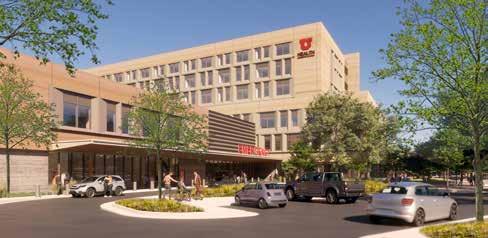
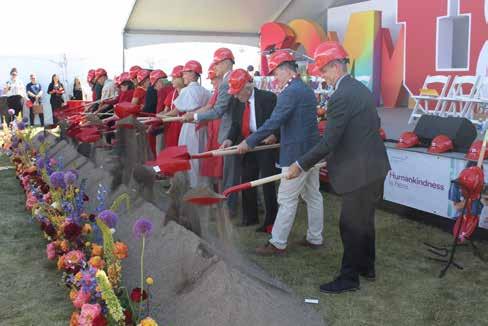
Same-week appointments are often available for primary care and sports medicine.
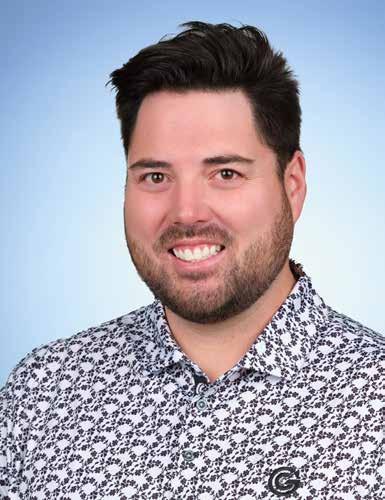
We are pleased to announce that Vincent Giron, DO, has joined the CommonSpirit Health team. Dr. Giron is a board-certified family and sports medicine specialist who believes in providing individualized care, tailored to each patient’s unique needs. His areas of expertise include:
• Annual wellness visits
• ADHD
• Concussion and fracture management
• All levels of sports performance
• Large and small joint injections
• Men's health
• Preventitive care
• Osteopathic manipulative therapy (OMT)
• Skin and other office procedures
• Sports and pre-participation physicals
• Ultrasound evaluation and guided joint injections
• Work-related injuries
Dr. Giron is accepting new patients. Call 801-964-3925 or use the QR code to schedule your appointment. Scan or visit mountain.commonspirit.org to learn more.
Scan the QR code or visit mountain.commonspirit.org to learn more or schedule an appointment.
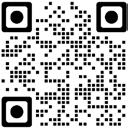
CommonSpirit Health Mountain Region does not discriminate against any person on the basis of race, color, national origin, disability, age, sex, religion, creed, ancestry, sexual orientation, and marital status in admission, treatment, or participation in its programs, services and activities, or in employment. For further information about this policy contact CommonSpirit Health Mountain Region Office of the General Counsel at 1-303-673-8166 (TTY: 711). Copyright © CommonSpirit Health Mountain Region, 2025. ATENCIÓN: Si habla español, tiene a su disposición servicios gratuitos de asistencia lingüística. Llame al 1-303-673-8166 (TTY: 711). CHÚ Ý: Nếu b
1-303-673-8166 (TTY: 711).
By Ryan Callahan, DO
As temperatures rise, so does outdoor activity—from weekend hikes and pickup basketball games to long days on the pickleball court. But with the thrill of movement comes a sharp uptick in lower extremity injuries, particularly to the ankle and Achilles tendon.
Every summer, emergency rooms and orthopedic clinics report a surge in ankle sprains, fractures, and tendon injuries. The most common culprits? Uneven terrain, sudden pivots, overuse, and inadequate warm-ups. While a minor sprain might only need rest and bracing, more severe injuries can sideline someone for months—or require surgery.
Three of the most common issues to be aware of:
Ankle sprains, often underestimated, can lead to chronic instability if not properly treated. Recurrent sprains may
eventually necessitate lateral ligament reconstruction, a procedure to restore stability to a weakened ankle.
Ankle fractures—whether from a misstep while running or an awkward landing during sports—may require an open reduction and internal fixation (ORIF), where the bones are realigned and stabilized with plates and screws.
Achilles tendon injuries, particularly ruptures, are also on the rise in active adults. These injuries often occur during explosive movements, like jumping or sprinting. While some partial tears can be treated without surgery, a full rupture often requires Achilles tendon repair to restore function and strength.
Injury prevention is just as critical as treatment. Proper footwear, cross-training, structured warm-ups, and balance exercises can go a long
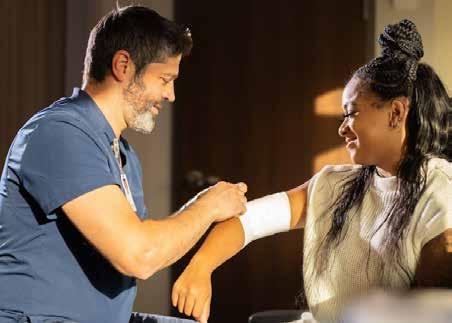

way in keeping you active and injury-free during the summer.
If you experience persistent pain, swelling, or instability in your ankle or Achilles, don’t “walk it off”—get evaluated by a physician. Timely diagnosis and tailored care can make all the difference between a season on the sidelines and a full recovery.
As you get out and enjoy all the amazing summer activities available here in Utah, be sure to take the proper precautions to protect your function and future.
Ryan Callahan is a board-certified foot and ankle orthopedic surgeon at CommonSpirit Orthopedics & Sports Medicine West Jordan.


At CommonSpirit Health, we make the healing presence of God known in our world by improving the health of the people we serve, especially those who are vulnerable, while we advance social justice for all.

Learn more about the services, care providers and missiondriven work of the Holy Cross hospitals and CommonSpirit Health at www.holycrossutah.org. When minutes count, count on our emergency care. Get to know us before you need us.
When you need emergency care fast, the closest emergency room is a smart thing to know. You never know the level of care you’ll need when an emergency happens and choosing the right ER can make all the difference. And a hospital ER comes with the confidence of additional services right on-site.
Congratulations to CommonSpirit Holy Cross Hospital – Jordan Valley for receiving the Leapfrog Hospital Safety Grade-A Accreditation for the fourth consecutive time. Leapfrog Hospital Safety Grades are determined based on a rigorous assessment of various safety measures.
Find emergency care close to you at mountain.commonspirit.org.
1 Weather Hunters with PBS Kids, 6-8 p.m.
Utah Cultural Celebration Center, 1355 W. 3100 South Kesha in concert , 7 p.m., Utah First Credit Union Amphitheatre, 5150 Upper Ridge Road
3 West Valley Farmers Market , 5-9 p.m., Centennial Park, 5405 W. 3100 S.
Dude Perfect: World Tour, 7 p.m., Maverik Center, 3200 Decker Lake Drive
8 Summer of Load, 3 p.m.,
Utah First Credit Union Amphitheatre, 5150 Upper Ridge Road
10 West Valley Farmers Market , 5-9 p.m., Centennial Park, 5405 W. 3100 S.
11 Jorge Medina & Josi Cuen, 8 p.m., Maverik Center, 3200 Decker Lake Drive
12 Incubus in concert , 7:30 p.m.,
Utah First Credit Union Amphitheatre, 5150 Upper Ridge Road
13 Collective Soul in concert , 6 p.m.,
Utah First Credit Union Amphitheatre, 5150 Upper Ridge Road
14 Barry Manilow in concert , 7 p.m., Maverik Center, 3200 Decker Lake Dr.
17 Cops and Cleats Youth Football Camp, 8:30-11:30 a.m.,
Hunter High School, 4200 S. 5600 West West Valley Farmers Market , 5-9 p.m.,
Centennial Park, 5405 W. 3100 S.
18 Keith Urban in concert , 7 p.m., Utah First Credit Union Amphitheatre, 5150 Upper Ridge Road
19 Volbeat in concert , 7 p.m., Utah First Credit Union Amphitheatre, 5150 Upper Ridge Road
21 Babymetal in concert , 7 p.m., Utah First Credit Union Amphitheatre, 5150 Upper Ridge Road
22 AJR in concert , 6:40 p.m., Utah First Credit Union Amphitheatre, 5150 Upper Ridge Road
24 City offices closed for holiday West Valley Farmers Market , 5-9 p.m., Centennial Park, 5405 W. 3100 S.
26 Jason Aldean in concert , 7:30 p.m.,
Utah First Credit Union Amphitheatre, 5150 Upper Ridge Road
29 Brit Floyd, 7:30 p.m., Maverik Center, 3200 Decker Lake Drive
30 The Lumineers in concert , 7:30 p.m.,
Utah First Credit Union Amphitheatre, 5150 Upper Ridge Road
31 West Valley Farmers Market , 5-9 p.m., Centennial Park, 5405 W. 3100 S. Dierks Bentley in concert , 7:30 p.m., Utah First Credit Union Amphitheatre, 5150 Upper Ridge Road
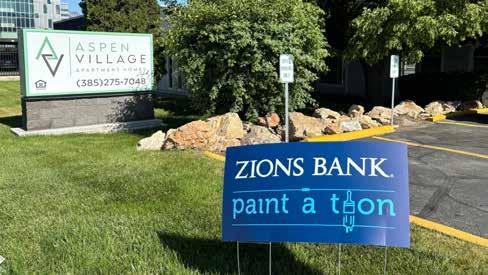
Bank’s annual Paint-A-Thon brings volunteers together to put a fresh coat on residential properties.
By Darrell Kirby d.kirby@mycityjournals.com
Itwasn’t the biggest of projects, but employees of Zions Bank once again took time to lay down a fresh coat of paint to make West Valley City a little nicer.
Rather than the usual painting of the exterior of someone’s house, the volunteers took part for a couple of days in June to paint the dumpster enclosures and curbs to indicate parking restrictions at Aspen Village Apartments at 3043 W. 3500 South. The 90-unit complex is home to residents whose income is 80% or less of the area median income.
Aaron Conte, an underwriter at Zions Bank and the project leader at Aspen Vil-
lage, said about 20 fellow bank employees took part in the bank’s annual Paint-A-Thon. “As an employee of Zions Bank, there’s a lot more meaning behind it. It shows that Zions Bank cares for the community.”
“It’s a great project for our community. It does look nicer. Our residents are super friendly and they will really appreciate all this effort,” said Ana Loya of EMG Management, which operates Aspen Village.
Zions Bank partnered with the Utah Housing Preservation Fund for the Aspen Village job. The nonprofit acquired the apartment complex in 2021 within the help of funding from Zions.
In total, more than 1,100 Zions Bank employees and their family members participated in last month’s Paint-A-Thon, sprucing up properties from Brigham City to Bicknell. This is the 33rd year for Paint-A-Thon. l
The West Valley Journal is a monthly publication distributed directly to residents via the USPS as well as locations throughout West Valley City.
For information about distribution please email hello@thecityjournals.com or call our offices. Rack locations are also available on our website. The views and opinions expressed in display advertisements do not necessarily reflect or represent the views and opinions held by Loyal Perch Media or the City Journals. This publication may not be reproduced in whole or in part without the express written consent of the owner. © 2019 Loyal Perch Media, Inc.
Scott | bryan.s@thecityjournals.com
Travis Barton | travis.b@thecityjournals.com
ADVERTISING EXECUTIVES
Mieka Sawatzki | mieka.s@thecityjournals.com
Lindsay Andreasen | lindsay.a@thecityjournals.com
Jason Corbridge | jason.c@thecityjournals.com
Ryan Casper | ryan.c@thecityjournals.com
Marc Davis | marc.d@thecityjournals.com
Lydia Rice | lydia.r@thecityjournals.com 385-557-1022
EDITORIAL
Anna Pro Ty Gorton
Stacey LaMont
WEST VALLEY CITY JOURNAL 9500 South 500 West, Suite 205 Sandy, UT 84070
PHONE: 801-254-5974
community while promoting a strong local economy via relevant content presented across a synergetic network of print and digital media. PUBLISHER Designed, Published, & Distributed by

Supporters are pushing the city for space in a historic church building.
By Darrell Kirby d.kirby@mycityjournals.com
Whatis now West Valley City enjoys a rich history over the decades as a rural farming community to Utah’s second-largest city today.
That past is chronicled through writings, photographs and various artifacts.
A group of West Valley City residents is trying to find a place to bring those items and stories together in one place for people to see and experience what led to the present-day municipality.
In particular, they are focused on a more than 75-year-old meetinghouse of The Church of Jesus Christ of Latter-day Saints at 3900 S. 4000 West, a building that has become known as the “lighthouse church” because of its lighthouse-like steeple atop the center of the redbrick structure.
The building, which opened in 1949, is in its waning days housing the Jordan North Stake as the church is looking to sell the building. Longtime resident and West Valley City Historical Society member Sheri Biesinger said its future could be as another neighborhood location for the activities and services of My Hometown Initiative in West Valley City, although neither the sale nor future plans have been finalized.
“We do not have a final agreement yet. We are still in discussions,” city spokesman Sam Johnson responded by email.
My Hometown is a collaboration among West Valley City, local churches, private and nonprofit organizations to provide resources and training to help residents improve their neighborhoods and life circumstances. That includes neighborhood cleanup projects and education, language and job skills training to help people raise their incomes and quality of life. There are currently four such centers in West Valley City, each in church meetinghouses.
Biesinger would like to see a portion of the old church used for a West Valley City historical museum, a first for the city. “I’ve personally been trying for two decades to get a museum for the city,” she said. “It would make a beautiful museum.”
Biesinger has lived all of her 60 years in West Valley City and said it is the only city of any size in the state that she is aware of without its own history museum. “The city has not really paid attention to us in that direction.”
Biesinger and fellow members of the West Valley City Historical Society are spearheading the effort to get a permanent home for a museum. She feels the old Jordan North Stake building is itself a historic landmark that would be a good place for a permanent public exhibit of the area’s past. Biesinger hopes to acquire funds from grants, donations and other sources to operate the museum at least on a limited basis.
She contacted the church about the idea of selling it to her group, but the church declined.
“Thank you for your interest in the Church Meetinghouse in West Valley and for

going through the correct channels to get your question answered. The Church…has chosen to respectfully decline,” read a portion of a text message Beisinger shared from a representative of CBRE, a commercial real estate firm that handles property sales for the church.
To help push the city in that direction, she launched a petition on Change.org. As of early June, there were about 900 signatures.
Many of the city’s historical items are currently stored in a room at the Utah Cultural Celebration Center and “I’ve got my basement
full of it,” Beisinger added.
She has a portable display that she takes and presents to community and church groups, but would like a permanent place where much more can be shown.
“I’ve personally been trying for two decades to get a museum for the city,” Biesinger said. “My heart’s just in it.”
For more information about West Valley City’s past, visit westvalleycityhistory.com. l
One of the most popular events at WestFest was Rising Generation Night on June 12, showcasing talented singers and dancers on the Centennial Park stages.
By
Tom Haraldsen t.haraldsen@mycityjournals.com
One of the highlights of this year’s WestFest celebration was Rising Generation Night on June 12. On both Centennial Park stages, youth performers showcased their talents and their hours of dedication to crafts.
Among the performers were the Salt Lake Academy of Music’s Festival Band. This talented rock group included six young teenagers who played both contemporary and classic rock numbers while weathering intense heat.
Band members included lead singer Liv Deagle; guitarists Aggy Deagle, Wylie Lander and Tyler Eriksson, bass player Franklyn Evans and drummer Rohan Apte. The Festival Band performs at many locations in the Salt Lake Valley during the summer.
SLAM is a nonprofit organization dedicated to providing access to musical instruments, instruction, performance and recording programs for youth ages 6-18. They welcome students of all skill levels, backgrounds and socioeconomic statuses. Students learn to focus on their desired set of skills,
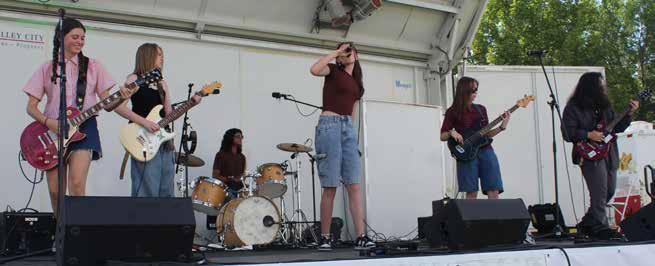
fostering musical, social and academic growth through both individual and group mentorship.
Other performers during Rising Generation Night included Sistema Strings and Taiko Drums, Taupou Dance Academy-Laiza Soliai, the Starlite Dance company, Ayllu United and Valley Light Christian.
There was also a butterfly release event held at the But-
terfly Tent near one of the two stages in Centennial Park.
A number of other entertainment events were part of this year’s WestFest, including rock, Latin and country music groups, a Tongan Christian band, a doughnut eating contest, police K9 demonstrations and fire department rappelling. Fireworks concluded festivities on both Friday and Saturday nights. l
A $500,000 state appropriation will be matched by the city to fund initial phase. “Big looming number” to come later.
By Travis Barton travis.b@thecityjournals.com
In anticipation of the 2034 Winter Olympics coming to Utah, the Maverik Center will see some improvements as one of the host venues.
The West Valley City Council approved 6-1 a move in May that will see $1 million directed toward replacing the exterior LED board over the grand staircase and a design and feasibility study see where improvements can be made. Half of that money will come from the Maverik Center’s reserve funds matching the other half coming from the state’s Olympics and Paralympics venues grant fund.
Andy Carroll, the asset optimization director from the economic development department, told the council the building needs improvements with the Olympics only nine years away.
“It’s an exciting time to be in the entertainment industry,” he said.
Of the $1 million, $300,000 is earmarked to replace the LED board while the other $700,000 is for the study.
The design process “tells us what’s possible then we can make a decision on what you’ll want the Maverik Center to
be,” Carroll said. “It’s not getting any cheaper.”
City funding will come from the Maverik Center’s budget, which Carroll said they expect to have a reserve fund of $4 million at the end of 2025 and $6 million at the end of 2026.
Currently the exterior LED ribbon board is broken and over 15 years old. Carroll anticipates the board will generate between $300,000 to $400,000 annually with ad messaging customized to each show. “It’s a revenue generator.”
He also explained the arena is cashflow positive as its programming continues to perform well, something he expects over the next 10 years.
The study should reveal where and how the arena can modernize and maximize itself. Carroll pointed to several areas where it can improve as they look at industry standards like merchandise, parking, suites, concession stands and office space to know how best to leverage that space.
“It’s really critical in this business to optimize the revenue when you have the customers,” he said. “There’s a lot with that building to drive revenue to capitalize on our guests.”
While the $700,000 is a hard cost with no spend exceeding that amount, it’s beyond the study where the “big looming number” is to renovate the arena, Carroll said.
To pay for it, Carroll noted the improving profit of the Maverik Center could be
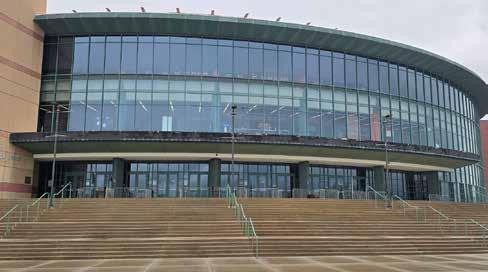
used for funding. As well as state-approved tax credits for entertainment districts, such as what’s happening around the Delta Center in Salt Lake City.
But he said that looming number “doesn’t scare him at all” with levers available to help, including a partner in the state who has similar interests.
Councilmember Will Whetstone was the lone dissenting vote. He said he understood the reasons to move forward on this plan. “We certainly don’t want to leave funds on the table by not matching…personally I don’t like taxpayer dollars going
By Holly Curby hello@hollycurby.com
Having trouble getting enough sleep?

You're not alone—quality rest may be the key to better health, productivity and overall well-being. As we dive deeper into the new year, many people are focusing on building healthier habits, with better sleep taking center stage. Dr. Patrick Kilcar, a professor at Georgetown University, points out that sticking to these new year’s resolutions often boils down to emotional responses to our actions and circumstances. Experts agree that improving sleep quality isn't just about getting more hours—it's about establishing a routine that fosters relaxation, rest and rejuvenation. The Centers for Disease Control and Prevention lists many benefits of sleep including maintaining a healthy weight, reducing stress while improving your mood, staying productive and even driving safely. While on a recent wellness check-up with a local Intermountain Health provider, the doctor shared, “to make sleep a priority, we first need to understand the why behind it.” She continued explaining, “beyond just feeling good, sleep helps manage stress and depression, it improves brain function, and it supports our overall health.” She emphasized that sleep can act as a “reboot” for the body and mind, similar to restarting a device that isn’t functioning properly.
For those seeking better sleep, Intermountain Healthcare suggests three key strategies:
1. Stick to a schedule: Consistency is vital. Adults need seven to nine hours of sleep, while children and teens require nine to 11 hours.
2. Save your bedroom for sleep: Avoid using the bedroom for work or leisure activities. Keeping the room quiet, dark and cool can promote restful sleep. FOX 13 News recently did a report noting that ceiling fans should spin clockwise in winter and counterclockwise in the summer for optimal air circulation.
3. Avoid sleep disruptors: Steer clear of caffeine and alcohol six hours before bed, heavy exercise three hours before, and large meals two hours prior. Additionally, reduce screen time an hour before bed to prevent the blue light from hindering sleep quality.
Companies like Calm and Sleep.com suggest using pillow mists or playing soothing music to help you unwind before bed. Other ideas include reading, stretching or
toward things like this.”
Finance Director Jim Welch would explain in another council meeting the Maverik Center has had positive financial results in recent years, but everything it spends must be approved by the city.
Carroll said they share the ambitions of the state wanting it to be its best version.
“We want to be a part of that,” he said. “We want people to come here and see this amazing arena and have an amazing time and an amazing experience. It’s great for West Valley City, it’s great for the state.” l
using essential oils to improve sleep. If sleep difficulties persist, it’s important to consult a doctor before turning to sleep medications, as certain health conditions, medications and lifestyle factors can interfere with sleep. Always check with a healthcare professional first.
As with any resolution, sharing your sleep goals with family members can provide support and accountability. As we embark on a new year, it’s the perfect time to reset our habits and prioritize what truly matters— starting with sleep. Remember, sleep isn’t just about the quantity of hours you get, but the quality of rest you allow your body and mind to experience. By following expert tips and making sleep a priority, we can set ourselves up for a year of greater well-being and success. Make sleep your secret weapon— your body and mind will thank you for it. For more tips and to connect with others on their sleep journey, check out Holly's Highlights Season 5 Episode 3 on Spotify, Tune-In, Apple Podcasts, or at www.hollycurby.com. l
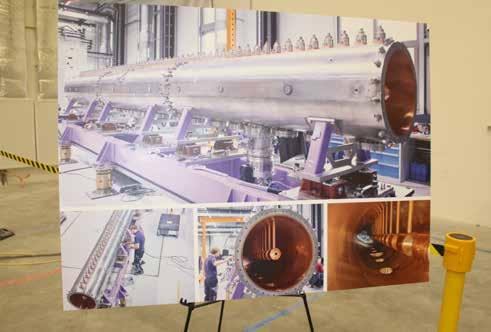
Two companies dedicated to expanding the reach of radioisotope production for medical and industrial purposes are set to open in West Valley City later this year.
By Tom Haraldsen t.haraldsen@mycityjournals.com
West Valley City is home to two major companies who will work together in the rapidly emerging medical radioisotopes market. At a ceremony June 9, Nusano Life Sciences and Summit Bioservices gave officials and media a tour of their neighboring facilities in West Valley City’s Industrial Park area.
Nusano’s 190,000-square-foot radioisotope production facility will open later this year, featuring a linear accelerator that will allow for more than 40 radioisotopes. Among those will be Actinium, Astatine, Copper, Cesium, Iodine, Iridium, Lead 203 and 212, Lithium, Rhenium, Scancium, Selenium, Strontium and Tin. Those isotopes can be critical in the fight against cancer and the innovation of industries ranging from aerospace to alternative energy.
“Decades from now, people will look back on how the mystery of many of our energy problems and isotope needs were resolved and they will point to West Valley City, Utah,” said Chris Lowe, Nusano CEO. “They will say this is the place where it all happens. That’s not hyperbole—it’s a fact. We’re long past just the concept phase—we’re near the operational phase. We’re lining up customers and ready to start installing equipment. There’s nothing like this anywhere else on the planet.”
Lowe said Nusano will become the

world’s first fully domestic supply chain for radioisotopes.
“If we dropped some of our equipment in downtown Beijing today, it would take Chinese engineers four to five years to figure out how to use it. That’s how far advanced we are in this facility,” he said.
As an example, take the linear accelerator. The SLAC National Accelerator Laboratory, originally named the Stanford Linear Accelerator Center, is a federally funded research and development center in Menlo Park, California built in 1966. It stretches for almost two miles and is used to accelerate electrons. At Nusano, that same function can be conducted in its accelerator that measures just 73 feet.
“With our technology we can open up more of the Periodical Chart of the elements, and do it with a higher purity than any other facility,” he said. “Most stabilized isotopes have come from western China or Russia. We can make our own here, and that’s a game changer for the isotope market. We can make 12 different products at once to help meet commercial demand.” He also said the facility is constructed with 162,000 metric tons of concrete, seismically stable to withstand even a 7.0 earthquake.
Summit’s facility sits right next door. The company is finishing construction on a 35,000-square- foot building that focuses on the drug development, storage and logistics sectors. It provides storage and logistics—in other words, a place where those radioisotopes can be safely stored and eventually distributed as necessary.
It offers an ambient temperature controlled environment (to as low as minus 196 degrees centigrade) and can ship
products as needed within a 48-hour turnaround. It will be operational later this year as well. The West Valley City facility is the largest of the Summit family west of the Mississippi River.
Both companies praised the location
of the West Valley City Industrial Park, just minutes from Salt Lake City International Airport and at a crossroads of major freeways, providing quick and easy access for shipments. l

West Valley City water providers say removal of fluoride has generated little customer reaction.
By Darrell Kirby d.kirby@mycityjournals.com
Forsome people, it’s a glass half full. For others, a glass half empty.
Fluoride in municipal water systems has long been controversial. Proponents of the mineral added to drinking water say it helps prevent tooth decay, especially in children. Opponents claim it can have harmful long-term effects, including bone health and mental development in kids, and that communities should not be adding what some term “forced medication” to culinary water supplies.
The latter argument won out as the Utah Legislature passed and Gov. Spencer Cox signed H.B. 81 in March. The bill required that fluoride no longer be added to local water systems in the state by May 7. The state became the first in the nation to impose such a ban.
Officials with the three water districts that supply the resource to the vast majority of West Valley City homes and businesses say the reaction from customers has barely been a drop in the bucket.
“We really didn’t hear anything from anybody, surprisingly,” said Granger-Hunter Improvement District general manager Jason Helm. “We looked at social media, our website, the phone calls coming in, we just have not had our customers calling in one way or the other. It was actually quite surprising.”
Helm said messaging was prepared for GHID’s customer service representatives and posted online, but it
has largely gone unneeded because of the relative silence on the matter among the district’s 28,000 hookups.
Helm noted that water flowing to homes and businesses will never be totally devoid of fluoride because it is a naturally occurring mineral found in groundwater. “We’re removing it, but there’s still going to be fluoride in the water,” Helm said.
He is curious to see how no fluoride added to the drinking water supply will impact the teeth of children over time. “There’s a lot to unfold and unpack with all of that.”
The Magna Water District provides water to 34,000 customers in Magna and the northwestern part of West Valley City.
“I only got two emails. I would have anticipated a little bit more,” said general manager Clint Dilley. “I got one resident back in January that really wanted it out of the water. They were convinced it was a health hazard.” After the legislation went into effect, another resident wrote, “Well, what do we do for fluoride now?”
Dilley says he can understand the arguments of fluoride proponents who point to reduced tooth decay. “I think the majority of the water providers would probably agree that there’s research showing there’s some benefit to the younger kids drinking it.” But he added, “It’s hard to justify in our minds a little bit of benefit when most of that water isn’t even being consumed. It’s going toward lawns and it’s going toward dishes.”
Kearns Improvement District also reported that public expression over the fluoride issue ran dry despite media coverage of the matter as it was being debated in the Legislature. “I thought it would stir up some more conversation, but we have had very, very little,” said Greg Anderson, general manager of the water and sewer provider for Kearns and a small portion of West Valley City. He said there was some back and forth in

KID’s Facebook page, but not much else. “I’ve had no phone calls or emails,” he said. Anderson said people likely recognized the fluoride ban was the doing of lawmakers and that his and the other water districts were just following the mandate.
Kearns Improvement District buys 94% of its water from the Jordan Valley Water Conservancy District, which was responsible for the fluoridation of the water until the ban. Anderson says the remainder of KID’s water is derived from its own wells, which contains natural fluoride from the earth and thus will continue to be present in small amounts. “The way the legislation was written, it can stay,” Anderson said.
KID has 14,500 homes and businesses connected to its system. l
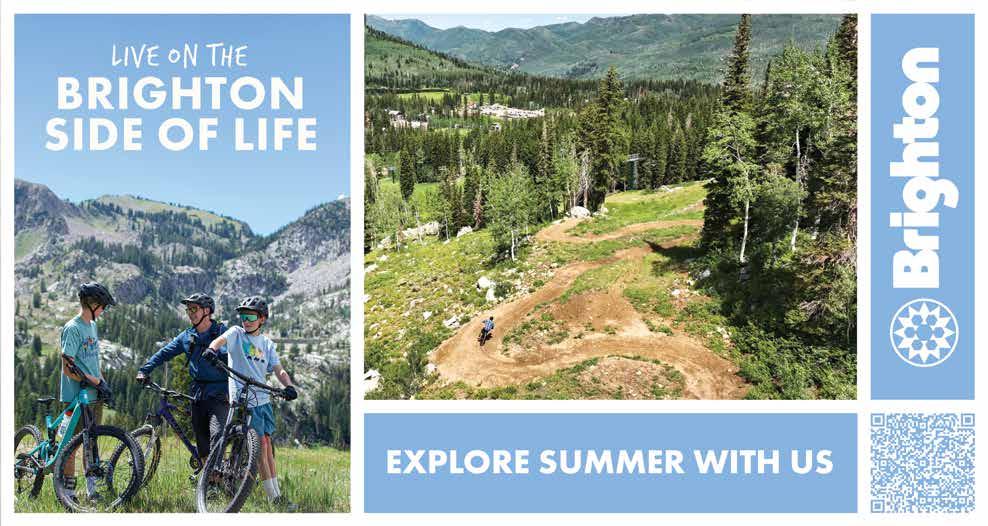
Children through age 18 can receive a free lunch on weekdays at 15 locations within Granite School District.
By Peri Kinder peri.k@thecityjournals.com
Tocelebrate the start of the Summer Feeding Program, Granite School District held a launch party on June 10 and invited families to participate in a free summer barbecue with games and prizes.
West Valley City’s Centennial Park (5405 W. 3100 South) was the site for the kickoff, as hundreds of people showed up for hamburgers, hot dogs, baked beans, fruit, chips and more. The summer lunch program provides a free daily meal, Monday through Friday, for kids 18 and under, through Aug. 1.
“Our goal is simple: to make sure no child in our community goes hungry,” said Amy Pham, registered dietitian with Granite District Nutrition Services. “We’re proud of the impact this program has made over the years and look forward to another successful summer.”
Janalee Smith, Granite District Nutrition Services operations manager, said the summer program feeds 1,500 to 2,000 students every day and is designed to ease the burden on families during the summer months. While kids eat free, adults can purchase a lunch for $3.50. All meals must be eaten on site.
The celebration featured vendor booths from community partners, free Super Soakers to the first 60 kids and country
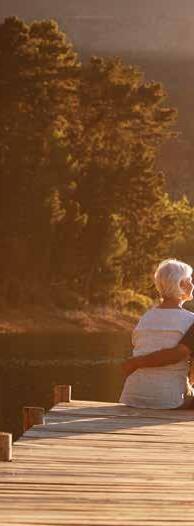
music provided by Z104. Special guests included West Valley Fire officials, Granite Police with K9 Officer Bolt, West Valley Police officers, Girl Scouts of Utah and Wasatch Community Gardens.
“This is a big kickoff and we’re trying to give it a little more pizzazz,” Smith said. “But it’s representative of what we’ve got going throughout the district.”
The lunch program is available at 15 locations throughout the Granite School District. Along with Centennial Park, lunches are provided at Kearns Oquirrh Park (5624 S. 4800 West), Redwood Rec Center (3060 S. Redwood Road), Magna Rec Center (3252 S. 8400 West), Magna Copper Park (8900 W. 2600 South), West View Park (4100 S. 6000 West), Hillsdale Park (3725 S. 3200 West), Valley Regional Park (5100 S. 2700 West), Hunter Park (5905 W. 3500 South), Vista Park (5150 S. 1950 West), Southridge Park (5051 S. 4015 West), Robert Fitts Park (3050 S. 500 East), Lincoln Elementary (450 E. 3700 South), Fremont Elementary (4249 S. Atherton Drive) and Jackling Elementary (3760 S. Atlas Way).
Draper resident Hilary Litton attended the barbecue event with her four children. “I think for any family it helps, especially those at a low income who can’t provide,” she said. “It’s good to get the kids out at a park, or wherever it’s located. I think it’s great for anyone.”
The Granite Summer Feeding Program has been running since 2012, serving more than 1 million meals to children during the summer. No lunches will be served on July 4 or July 24. For more information, including lunch times at each location, visit graniteschools.org/nutritionservices/seamless-summer. l
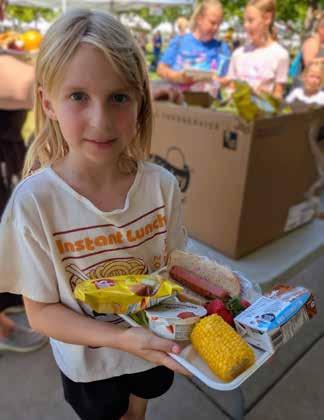
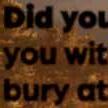








The idea was created and proposed to the city council by fifth-grade students.
By Zachary Smith z.smith@mycityjournals.com
Elementary held a special celebration of their 140th anniversary in May.
The birthday party featured cake, historical displays and heartfelt tributes from current students and alumni alike. Yet the most exciting moment was the unveiling of a new street sign to commemorate the monumental milestone. At a meeting April 22, the West Valley City Council approved a resolution to rename a portion of 6000 West to Whittier Way, a reference to the school’s slogan, “that’s the Whittier Way.”
The resolution was created, proposed and advocated for by Whittier Elementary’s fifth-grade students as a gradewide social studies project. One of the core focuses of fifth-grade social studies is government and civics at a federal, state and local level. This year, Whittier’s students had an opportunity to learn about the lawmaking process through a real experience by playing a part in bringing an exciting, positive change to their community.
Like many schools that focus on a STEAM curriculum, Whittier has taken on other ambitious school projects in recent years. In January 2024, the Whittier student body created a Rube Goldberg machine that spanned across a whole hallway and part of the school gym. But the sign is the biggest achievement by the school yet.
Whittier principal Jen Bodell said the idea for the initiative started as a joke in 2024. “I was in a meeting with an-
other Granite School District employee…and he said, ‘What are you gonna do next, get a street named after you?’ And I laughed and thought, ‘Yes, let’s do that!’”
The idea tied perfectly into the fifth-grade core curriculum. After all, what better way to learn about local government than to participate in it? Bodell presented her students and teachers with the goal of passing a resolution in West Valley City Council to make the new street name official, a challenge that was met with excitement. Students were tasked with researching the necessary steps, creating the proposal, and writing public speeches to present at the March 11 council meeting.
Core focal points of the arguments presented to the council were the rich history, enduring legacy and community impact of the school. “Today, we see Whittier Elementary as more than a timeline of events,” said Carmelita, one of the fifth-grade speakers. “We see it as a place of belonging, a place of learning, and a place of community that serves to better the lives of those who enter its doors.”
The next fifth-grade speaker, Brooks, highlighted the school’s commitment to the betterment of the community that it prides itself upon. “Today, we are still doing all we can to be involved and include our community,” he told the council. “Because again, it’s the Whittier Way!”
The students and their parents were invited back to the April 22 council meeting, where they anxiously waited for the final verdict. The resolution passed unanimously, and the sign was officially erected soon after, just in time for the big event.
“The sign represents the hard work of these kids,” Bodell said. “But it also represents the importance of this school to the community.” l
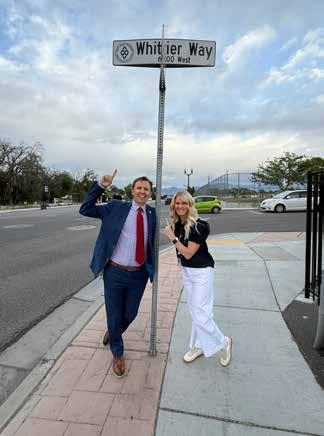

Change only happens when everyone is committed to a culture of care. Take the free training online or from your local municipality, school or library.
By Cassie Goff c.goff@mycityjournals.com
ContentWarning: The following article contains discussions about suicide and mental health issues. If you’re not feeling great right now or if these topics may be triggering, it’s OK to proceed with caution, skip or talk to someone you trust. You are not alone.
Utah has been one of the leading states for deaths by suicide for the past decade, especially within teen populations. In 2022, the Centers for Disease Control and Prevention reported 22.1% of all deaths in Utah were suicide related. (These are the most recent health statistics from the CDC.) In 2024, The Trevor Project’s National Survey on Mental Health reported 42% of LGBTQ+ young people (ages 13-24) in Utah seriously considered suicide in the past year with 11% attempted.
These consistently high statistics have led to a push for suicide prevention trainings like NAMI’s QPR Suicide Prevention Education and Live On Utah’s Suicide Prevention Playbook. QPR trainings have been reoccurring in many organizations, municipalities and communities this spring/summer 2025 season.
QPR stands for Question, Persuade and Refer: the three steps at the core of their suicide prevention training. QPR training asks participants to challenge the myths around deaths by suicide that they may have internalized.
The first myth participants must face is the “no one can stop a suicide” myth. Legally, Good Samaritan and bystander laws protect against negative outcomes of intervening. Over 3 million people have gone through QPR training with no reports of lawsuits.
Another important myth that must be debunked during suicide prevention training is “once a person decides to commit suicide…there’s no stopping them.”
“Suicide is the most preventable kind of death. Almost any positive action may save a life,” said DaSheek Akwenye, senior director for Salt Lake Community College’s Center for Health & Counseling.
The first step outlined in QPR training is question. Suicide prevention research warns that people considering suicide will communicate intent within the week before an attempt. That intent is often subtle through verbal, situational and behavioral clues. Question those subtle clues.
Some examples of indirect verbal clues may be: “I’m tired of life,” “Pretty soon you
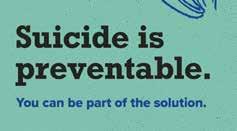
To get started knowing how to help friends who are struggling, visit www.LiveOnUtah.org. (Photo courtesy Salt Lake County)
won’t have to worry about me,” and “I just want out.”
QPR training recommends responding quickly to such verbal clues by asking what was meant by the statement and talking about the stigma and/or feeling around it. These conversations are more impactful in private settings with plenty of time.
“It takes some courage to be able to have this type of conversation,” said José Rodríguez Hernández, support case manager.
Some examples of behavioral clues include: sleep deprivation or inability to stay asleep; unexplained anger, aggression and irritability; sudden interest or disinterest in religion; putting personal affairs in order; giving away prized possessions; acquiring a gun; and stockpiling pills.
Situational clues may include: being fired or expelled; a recent unwanted move; loss of any major relations; sudden unexpected loss of freedom; fear of punishment; and fear of becoming a burden to others.
QPR training recommends asking thought-providing questions about these behaviors and situations to engage in conversations about them—which may challenge another myth around suicide-related death: “asking about suicide will make the person angry and increase risk.”
Instead, QPR training has found that asking direct questions lowers anxiety and opens up an opportunity for communication which can help lower the risk of suicide. That may look more direct like “Are you feeling suicidal now or lately?” or less direct like “Do you ever wish you could go to sleep and never wake up?”
After questioning warning sign clues, the next step is to persuade. QPR training seeks to answer the question “but how do I persuade someone to stay alive?”
Their answer? Utilizing active listening as a skillset.
Don’t worry, QPR training breaks down active listening skills for those who may not feel confident in their abilities quite yet. Mainly: listen to the problem with full attention, stop and ask clarifying questions, and do not rush to judgement.
“Giving advice is not listening,” Hernández said.
QPR training offers reassurance to ask the direct questions of “Will you go with me
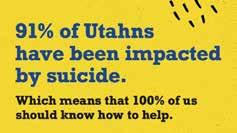
Since Utah has been leading in suicide-related deaths for over a decade, more and more suicide prevention courses are being developed and encouraged. (Photo courtesy Salt Lake County)
to get help?” and “What can we do to keep you safe for now?”
Now, it’s time to move to the third step of refer. QPR training recommends taking a moment to figure out where and how referral will make the most impact, even if that’s getting a commitment from the person to accept help and move toward making those arrangements.
This leads to the final myth participants must challenge when learning about suicide prevention: that “only experts can prevent suicide.” Instead, QPR training asks participants to think about offering support, hearing someone out, and steering them in the right direction to get professional help.
“In every culture, village and social system there are people who are called upon for times of severe distress,” Hernández said.
Referral may look like setting up conversations with clergy, religious leaders, school nurses, therapists and/or counselors. Hernández encourages that there’s no shame in noticing your own limitations and finding someone who can have these conversations.
“Suicidal people often believe they cannot be helped,” Akwenye said. “Any willingness to accept help at some time in the future is a good outcome.”
Some additional pro-tips include:
● Think about the use of language—it’s important.
● Offer encouragement such as saying “I want you to live,” “I’m on your side,” and “We will get through this.”
● Come from a palace of compassion.
● Follow up with a visit, phone call or card.
● Develop and foster a culture of care.
“It’s about the time and effort put into listening to someone,” Hernández said.
Additional resources for when you or someone you know needs support:
988 Suicide and Crisis Lifeline
Text or call 988, if you or someone you know is in crisis
The 988 helpline provides immediate emotional and mental health support from trained crisis workers 24/7 www.988lifeline.org
SafeUT Smart Phone App
Download APP at the Apple Store or

Suicide prevention training focuses on facilitating open conversations with room to question, persuade and refer. (Photo courtesy of QPR Institute)
download at Google
Real-time crisis intervention and a confidential tip line; responds to all chats, texts, and calls www.healthcare.utah.edu/uni/programs/safe-ut-smartphone-app
Veterans Crisis Line
Call 1-800-273-8255 (Press 1) or Text to 838255
Confidential help for veterans and their families www.veteranscrisisline.net
Salt Lake County Crisis Line Call 801-587-3000
Operated by the University of Utah Neuropsychiatric Institute 24/7 www.healthcare.utah.edu/uni/programs/crisis-diversion
The Alex Project Text LISTEN to 741741
Gives all youth in crisis the chance to reach life-saving help via texting regardless of where they live www.alexproject.org
The Trevor Project Call 1-866-488-7386
Free 24-hour services geared toward LGBTQ+ teens in crisis www.thetrevorproject.org
Utah Suicide Prevention Coalition
Crisis counseling, mental health information and referrals in your county www.utahsuicideprevention.org
Hope4Utah
Providing hope and promoting change through school programs, community connections and mental health partnerships www.hope4utah.com
American Foundation or Suicide Prevention
Training for survivors to facilitate survivor support groups or to get involved in education and advocacy www.afsp.org l
myself over the world, and then I have to tell people.’ It’s a lot.”
By Peri Kinder peri.k@thecityjournals.com
teens are navigating a world that often misunderstands or excludes them. But with support, safe spaces and resilience, many find ways to thrive.
For teen and young adult members of the LGBTQ+ community, the journey to mental wellness is layered. Many have difficulty learning to live an authentic life, often facing depression and discrimination.
JoAnn Cook, a Teenscope therapist at Huntsman Mental Health Institute, works with teens ages 12 through 18 as they navigate sexual and gender identity. She said the key to addressing these matters starts with providing a safe place where people have the time and space to figure things out, without the fear of judgment.
“We have to build rapport and trust so that they can do that inner work and then we guide them in identifying their own values, their own boundaries,” she said. “A kid has their own coming out process. They have a lot to explore. They say, ‘Whatever the world told me is wrong, so I have to trust
As teens question their identity, they often face both acceptance and rejection. Coming out to friends and loved ones can be terrifying. Letting go of shame and finding places where they’re truly accepted takes time.
Research shows that if a queer teen has one person in their life supporting their choices, the risk of suicide, substance abuse and self-harm drops significantly. Cook said parents shouldn’t be hung up on asking teens what pronouns they prefer or how they want to identify, since these young people are still trying to figure it all out. What matters is encouragement along the way.
Cook said the rise in anti-trans bills across the country has substantially impacted the community, making it even more difficult for youth to navigate their mental health. Teens need to understand a world that continues to exclude them while trying to find acceptance.
“The political climate is pretty rough for the community, giving permission to people who are pretty cruel, so the harassment increases and the bullying increases,” Cook said. “That makes it harder for them, which increases anxiety, and then they feel isolated, so that oppression increases. Suicidal rates go up, self-harm rates go up and

substance use rates go up.”
In 2023, Senate Bill 16 banned gender-affirming medical care for transgender youth in Utah. The ban was intended to give lawmakers time to study the treatment. The recently released, state-ordered study found positive results for gender-affirming care.
The Utah House Minority Caucus Leadership released a statement in May that
read, “More than two years after the Utah Legislature banned gender-affirming care for transgender youth, we are encouraged that Utah healthcare experts have found strong evidence of positive mental health and psychosocial outcomes resulting from this care…Now that the Legislature-commissioned study has found overwhelmingly positive health outcomes, we must act to lift the ban.”

Cook said anti-trans legislation is intended to create fatigue and overwhelm in LGBTQ+ circles, especially as the number of bills targets a small percentage of the population. To combat unease and anxiety, she encourages youth to find like-minded, supportive people and trained therapists in the

For those looking for community, places like Under the Umbrella bookstore (511 W. 200 South) sells books written by queer authors, hosts events and supports local artists. The Encircle organization provides resources and support for LGBTQ+ youth and family members. To learn more about Encircle, visit Encircletogether.org.
As an advocate and member of the LGBTQ+ community, Cook said she’s faced many obstacles and built a network of support throughout her life. She said the antidote to fear and discouragement is joy.
“Trans people, queer people, we have been around forever and we’ve had joy and we’ve lived our lives and there is love,” she said. “We figured it out before. Every generation is stronger and louder and healthier, and we’re going to push back.
“Our responsibility is to get healthy. Have joy, dance, have music and then go to the protest, talk to the people you know. Be safe, but stand up. When our neighbor is tired, we stand up next to them and keep marching forward. We’ve done it before. I’ve done it all my life. We will do it again. We’re not going away.” l

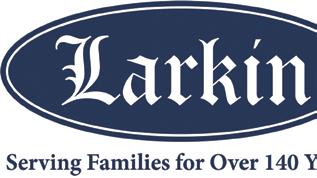

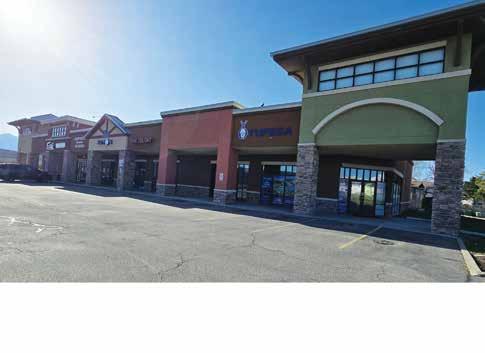
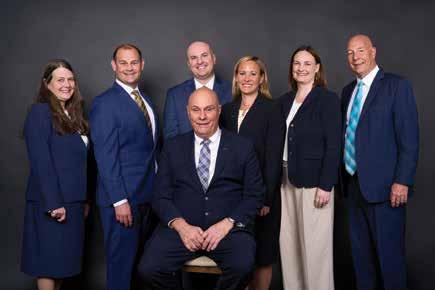
For 140 years, families have come to trust Larkin Mortuary as the leading funeral service provider along the Wasatch Front.
Family owned and managed for seven generations, Larkin provides a full spectrum of end-of-life services from funeral and graveside amenities, cremation facilities, two cemeteries, indoor and outdoor mausoleums, cremation niches and scattering gardens.
Larkin’s vertically integrated services also offers a premier floral shop, monument, urn and vault manufacturing facilities, along with beautiful memorial meeting and luncheon facilities. Multilingual staff honor and facilitate important traditions of many cultures.
Some Utah State Prison inmates are spending their time behind bars preparing for a more productive life after they are released.
By Carl Fauver c.fauver@mycityjournals.com
“My Utah State Prison students are the best I have ever taught…they are so dedicated to bettering themselves…it is an amazing experience, meeting and teaching these students.”
It would seem praise can’t come much higher than that offered by Salt Lake Community College Prison Education Program Coordinator, Dr. Chris Bradbury.
But his colleague – PEP English instructor Dr. Darin Jensen – comes close: “These are typically the best students I have all semester. They write more than my on-campus students. Most of them see this program as an important component to their future.”
Earlier this year, 28 students graduated from the program at the Utah State Correctional Facility. The men and women earned associate degrees in anthropology, business, criminal justice and general studies. One of the 28 completed a degree in computer science and information systems.
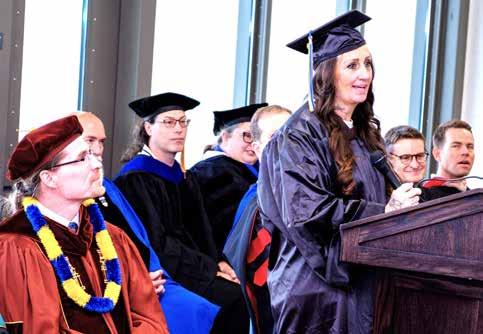
These students also now have the opportunity to continue on to earn a four-year bachelor’s degree.
Among the four inmate graduates who spoke during the small ceremony was Melissa

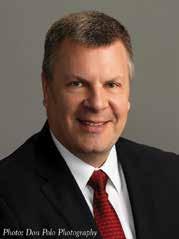
make great changes in the world. Life is fragile. Things are broken… things are stolen… things get lost – friends, family, homes. Everything can be taken from me – but not my education. I am my education.”
The SLCC Prison Education Program began as a small pilot effort in 2017. It was, and continues to be, funded in part by the Utah State legislature. This past year alone, more than 200 incarcerated students participated in SLCC courses offered at the prison.
According to an Emory University study, prison inmate recidivism dropped by 84% among incarcerated inmates who have earned associate degrees. Other research indicates every dollar spent on prison education eventually saves taxpayers $4 in the cost to reincarcerate them.
More than 40 SLCC instructors teach in the PEP program. Some are part-time employees who only teach there. But most also teach at one of the school’s many campuses throughout the Salt Lake Valley. SLCC’s largest, “main” campus is located in Taylorsville at 4600 South Redwood Road.
Richmond, who shared how earning an education became important to her after she had been stuck in a cycle of addiction and suffering.
“School became my life (in prison),” she said. “It made me realize I have the ability to




Prison Education Program students are required to pay the normal SLCC tuition each semester. However, many of them are eligible for federal Pell grants and other scholarships.
Utah State Prison inmates are eligible for the program, regardless of the crime they committed to land in jail. However, they have to earn an elevated “inmate privilege status” through the prison in order to enroll.
“There’s a wait list for inmates trying to enter the PEP,” Bradbury said. “Most of the time we offer classes five days a week. We’re also running a 6-class summer program (now). Prison officials are very supportive of what we are doing. We have a strong partnership.”
“Years ago, when I was with another college, I taught and worked with high school dropouts,” Jensen said. “So when the opportunity came for me (to teach in the PEP), I volunteered. Most of our prison students are in their 30s. They’ve had more time to mature and to better understand the value of an education. The Prison Education Program is a wise investment for the public.”
Inmate graduate Mauren Wall also spoke during the Utah State Prison graduation: “I truly believe we are our own limitation. The day we recognize this is the day you’ve left all excuses behind.”
Wall earned an SLCC associate’s degree in business and has been accepted into the University of Utah’s Utah Prison Education Program.
“Honestly, teaching in the Prison Education Program is the most rewarding experience I have ever had in my life,” Bradbury concluded. “Helping these prisoners is so rewarding. It is very emotional watching them graduate. I don’t really view what I do as ‘work.’ I view it as service; and it’s very meaningful.”l

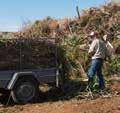



From a new open-space lounge to enhanced food and drink options, Utah First Credit Union Amphitheatre has enhanced its options for the 2025 season.
By Tom Haraldsen Salt Lake Business Journal
Several additions to the Utah First Credit Union Amphitheatre have greeted guests as the new season of concerts began earlier this month. Among those is the debut of The Backyard, a new openair lounge in the south side concessions area that features an exclusive menu, lawn games and live entertainment.
“The genesis of The Backyard is really just creating an outdoor ‘hang out’ space and still a premium area, but doesn’t have the stodginess you might think of for a VIP experience,” said Sean O’Connell, VP of regional operations for Live Nation. “We have a bar that’s set up to look like a cookout. We have a big screen so customers won’t miss a minute of our performers on stage. And we have a menu offering classic barbecue, specialty cocktails and local brews.”
The amphitheatre has also upgraded its food options, including Mosh Burger,
Rebel Hen chicken tenders and Ziggy’s Magic Pizza. O’Connell said fans can enjoy non-alcoholic options like ColdRush Shaved Ice and Riffresher iced drinks, plus iced Jolene Coffee and crowd favorites Koko’s Bavarian and CVT Soft Serve Ice Cream. There’s even $2 hot dogs and snacks starting at $3.
There will be close to 40 shows at Utah First Amp this year (still a couple more that could be added in the next few weeks). O’Connell said the venue continues to see its number of acts grow because it's proven very popular with performers.
“A lot of those bands that would otherwise be playing in stadiums know that when they come to Utah, they’re going to have the experience with the fans that makes them want to come back,” he said. “And fans get an experience they can’t necessarily get in a stadium.” This year, both Hozier and Chris Stapleton are doing back-to-back shows for their respective dates at Utah First Amp.
The amphitheatre has seating for about 20,000 fans, including the lawn areas. So far, the Mumford and Sons show June 14 was a complete sellout, and Stick Figure June 15 had a near capacity crowd. The large video screens on either side of the stage area, coupled with strong video production, helps every attendee see per-



formers up close.
Utah First Amp also modified the seating area, offering open-air suites for up to eight guests, flexible box seats for four to eight guests, and the Rock Box VIP lounge that seats up to 16 guests. Premier memberships offer access to every show, along with dedicated parking and private venue access.
“We really are giving our guests a lot of options to make sure they have a great experience at Utah First Credit Union Amphitheatre,” O’Connell said. “There’s something for every musical taste coming this year.”
More info is available at UtahFirstAmp.com. l








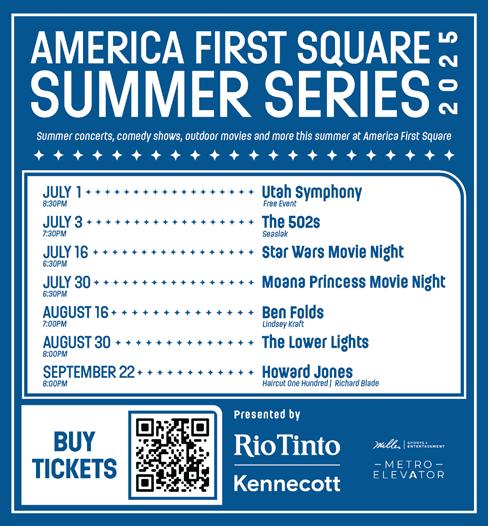



















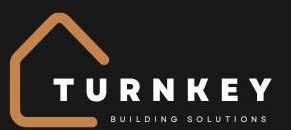
By Holly Curby hello@hollycurby.com
When reflecting on the lessons that have shaped my life, my dad, Dr. James Harding, stands out as one of my greatest influences. His wisdom, faith and leadership have profoundly impacted me—as a retired pastor, former Air Force veteran, widower, and as a father and grandfather. I recently sat down with him to reflect on his life experiences and the key lessons that have shaped both his life and, consequently, the lives of me and our
1. The Importance of Family Over Work
In reflecting on his own upbringing, my dad shared, "My father loved me, but he wasn’t always there. He was a workaholic and traveled a lot for his job. I didn’t want to make the same mistake. Family has to come first." This lesson has had a lasting impact on how my dad prioritized his family while balancing his demanding career in ministry.
Balance work with the people you love.
2. Love and Care for People
"My dad’s deep love for people left a lasting impression on me," my dad shared. "He had a genuine passion for helping others, and it shaped how I approach life. I’ve always made it a point to carry that forward, caring for those around me, no matter how busy things get."
Prioritize caring for those around you, even during the busiest times.
3. The Power of Encouragement
One transformative experience for my dad was his encounter with a professor named Dr. Bobby Derryberry. "I wasn’t a good student, but Dr. Derryberry believed in me. His confidence sparked a change in me, and I decided to try harder."

Encouragement can change someone’s life. It’s important to believe in others.
4. Clarity in God’s Will
One of my dad’s favorite quotes is “God isn’t the author of confusion; He’s the author of clarity.” He has taught me that when we seek God’s will sincerely, He will give us clear direction. This principle has helped me through uncertain times, reminding me that clarity comes when we walk closely with God.
5. Embracing Life’s Challenges with Faith
My dad faced a life-altering challenge when he had a heart attack at 61, the same age his father passed away. Looking back on such a pivotal experience, my dad said, "I felt blessed, not lucky, because God gave me a new lease on life."

Embrace gratitude and see challenges as opportunities to grow and serve others.
6. Advice for Fathers
When I asked my dad for advice to share with other fathers, he said:
1. Live for the Lord – "Your faith needs to be more than just words; it should be your way of life."
2. Love your wife – "The love between parents builds a strong foundation for the whole family. The greatest gift you can give your children is to love their mother."
3. Lead your children – "Be the parent. Don’t let your children lead the home. Lead with wisdom, even when it’s hard."
These principles continue to guide me in raising my own children, ensuring I lead them with purpose and love.
7. Final Words of Wisdom
When reflecting on his younger self, my dad shared, "I would tell myself to work on relationships and play less. I spent too much time focused on fun and not enough on building meaningful connections."
This reminder has been important for me as I navigate relationships and priorities in my own life.
As I reflect on my dad’s wisdom, I’m reminded of how much of his life has influenced my own—and grateful how his example continues to guide me today. These lessons on faith, family, service and leadership are more than just words; they are principles I strive to live by and pass on to my own children. Life is a journey, and the lessons we learn along the way are what make us who we are.
Find more tips and insights on intentionally living a life full of purpose on Holly's Highlights Podcast, available on Spotify, Apple podcasts, Tune-In and at www.hollycurby.com. l

By Peri Kinder peri.k@thecityjournals.com
Budgets are tight this summer and big, family getaways might have to be pared down. Luckily, we live in a state that offers incredible national parks, gorgeous hiking trails, fun activities and delicious places to eat. If you’re in the mood for a staycation this month, here are a few options that are close to home.
Ogden Weekend Getaway
If you haven’t been to Ogden lately, you’ll be pleasantly surprised by the number of shops, eateries and attractions in the area. You can start your adventure with a walk down Historic 25th Street, with its boutiques and galleries. The area also has restaurants, bars, pubs and diners with food to fit any appetite
For fossil lovers, the George S. Eccles Dinosaur Park features an outdoor sculpture park and play area, a gem museum and the Stewart Museum of Paleontology. Adventurists can try indoor skydiving at iFly, indoor surfing or wakeboarding at Flowrider or rock climbing at iRock.
Outdoor lovers can kayak the Ogden River, hike or bike the Centennial Trail, or paddleboard at Causey Reservoir. Soak tired muscles at Crystal Hot Springs, just a 30-minute drive north of Ogden. For more ideas, check out visitogden.com.
Head to the mountains with a weekend staycation in Park City or Heber. With ziplines, the Alpine Coaster, a downhill bobsled ride, paddleboard yoga and more, you can find something for the whole family to enjoy.
While you’re in the Wasatch Mountains, explore biking and hiking trails, horseback riding, hot air balloons, rafting and golfing. The nearby Jordanelle State Park offers fishing boats, pontoons, and ski boats to rent, along with a tackle shop for any fishing needs.
On Heber’s Main Street, visit the iconic Chick’s Cafe for lunch or breakfast. It’s the perfect diner spot with homemade scones, French toast, sandwiches and more. With museums, galleries, boutiques, markets, Olympic venues and beautiful landscapes, a trip to the mountains is the perfect escape. Visitparkcity.com had more ideas and places to stay.
Spend the weekend exploring the numerous caves in and around Logan Canyon. A 2-mile trail in the canyon takes you to Wind Cave with its spectacular view and rock formations. Families also enjoy visiting Hobbit Caves, easily accessible and near a waterfall. Drive further north to explore the Monnetonka Cave in a group tour of its rooms of stalactites and stalagmites.
Once you’re back in Logan, visit Angie’s Diner for homestyle cooking, El Toro Viejo for wonderful Mexican dishes or Tandoori Oven for delicious Indian food. Wrap up your adventure with a stroll down the Logan River Trail, a stop at the Denzil Stewart Nature Park and enjoy a cone at Aggie Ice Cream on the Utah State University campus. For more information, go to visitutah.com.
How often do you explore your own city? Chances are, not enough. Salt Lake City has multiple options for adventure, plus you might find a new favorite shop or restaurant.
Start your daycation with a sunrise hike to Ensign Peak.

Located behind the Utah State Capitol, the view of the Salt Lake Valley is breathtaking. Next, stop at one of the many breakfast spots in the city, including Oasis Cafe with its classic coffee cake and egg dishes.
Head to the Natural History Museum of Utah, on the University of Utah campus, which features the world’s largest display of horned dinosaur skulls and floors of artifacts. Then, drive to the 9th & 9th District for an afternoon of shopping in fun boutiques and experiencing local foods. Walk east on 9th South to visit the unique whale sculpture.
In late afternoon, cool off in the splash pads at Liberty Park. Salt Lake’s oldest park features tennis courts, an outdoor pool and Tracy Aviary, one of only two accredited standalone aviaries in the country.
Finish the day on the patio at Ruth’s Diner in Emigration Canyon. Enjoy drinks and delicious fare as you listen to live music with family and friends. VisitSaltLake.com has a list of things to do in Utah’s capital city. l
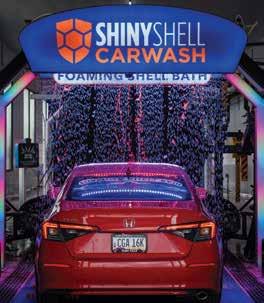










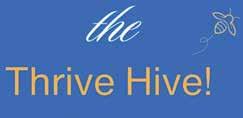
From scooter to superstar. Community hero keeps Sandy streets spotless.
By Julie Slama j.slama@mycityjournals.com
Jim
Peery, a familiar sight on Newcastle Drive in Sandy, spends hours each day on his motorized scooter cleaning up trash, raking leaves and clearing pinecones. Drivers honk, bikers wave and many know him by sight if not by name.
His dedication earned him the title of community hero from Chris Haber.
“Sandy resident Jim Peery is a shining example of community spirit,” Haber wrote. “Despite relying on a mobility scooter, Jim takes it upon himself to clean up the roads and sidewalks.”
Haber continued: “His dedication and selflessness inspire those around him and make Sandy a better place to live.”
Neighbor Monica Petersen agrees: “He keeps the area looking clean and nice. He does a great job.”
Peery, who was previously featured in the Sandy Journal in June 2019, was hesitant to be recognized again.
“I don’t do it for notoriety,” he said. “I'm grateful for the opportunity to serve my community doing this. This is something I can do.”
Community members appreciate his efforts, even creating a “Thank You Jim” banner.
“All the comments were full of gratitude and love,” said Jeni Hancey Larsen, who along with her father, Jeff Hancey, mounted the sign where Peery cleans. “Jim keeps our neighborhood immaculate, but the clean street is secondary to having him around as a neighbor and friend.”
Wearing one of his 28 bright orange shirts, Peery maintains Newcastle Drive from Highland Drive to Flat Iron Park, four hours a day, six days a week. He adjusts his routine with the seasons —bagging leaves in the fall, clearing debris in spring, and working early in summer to beat the heat.
“Last fall, I raked everything and had 97 big piles. I got my wife Karla to help me bag them up,” he said. “That’s the hardest thing for me.”
Using a homemade wooden scooter and tools including a shovel, broom, tongs and a leaf blower, he focuses on clearing debris.
“My number one thing is trash. I pick up all the trash— banana peels, apple cores, paper, trash that blows out of cans, candy wrappers when the kids walk home from Albion (Middle School),” he said. “The second thing, I pick up pinecones and rocks, because these bikes are going 30 miles an hour down the hill. If they hit a rock or a pinecone, they're going to be on their hats.”
He’s grateful for the assistance he gets from Sandy City.
“The Sandy City crew does an excellent job cutting the grass and blowing it and then, they pick up my bags. My objective is so people can have a nice walk, drive, bike, skateboard and they can enjoy themselves,” he said.
Even with the clean sidewalks, sometimes Peery will take a spill.
“I’ll take a curb or turn too tight, but I’m never down for long. Usually within two minutes, I have a bunch of people stopping to help,” he said. “People are really kind. By being out here, I’ve gotten to know so many friends in the community.”
While neighbors and his grandkids occasionally lend a hand, Peery said, “It’s really my thing.”
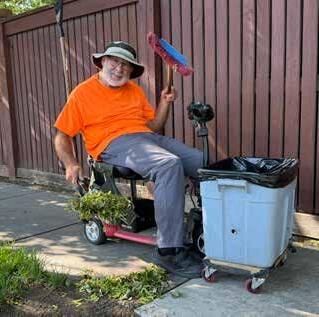
Volunteering for Peery began 20 years ago when he began losing his balance while walking and his position as a computer programmer ceased.
It was after moving to Sandy in 2016, when he was inspired to step up as the city planned to paint fences along Newcastle.
“I thought, ‘Someone should clean that first.’ Then, I thought, ‘I’m someone,’” he said. “I want to help my community. I want to do my part.” l





























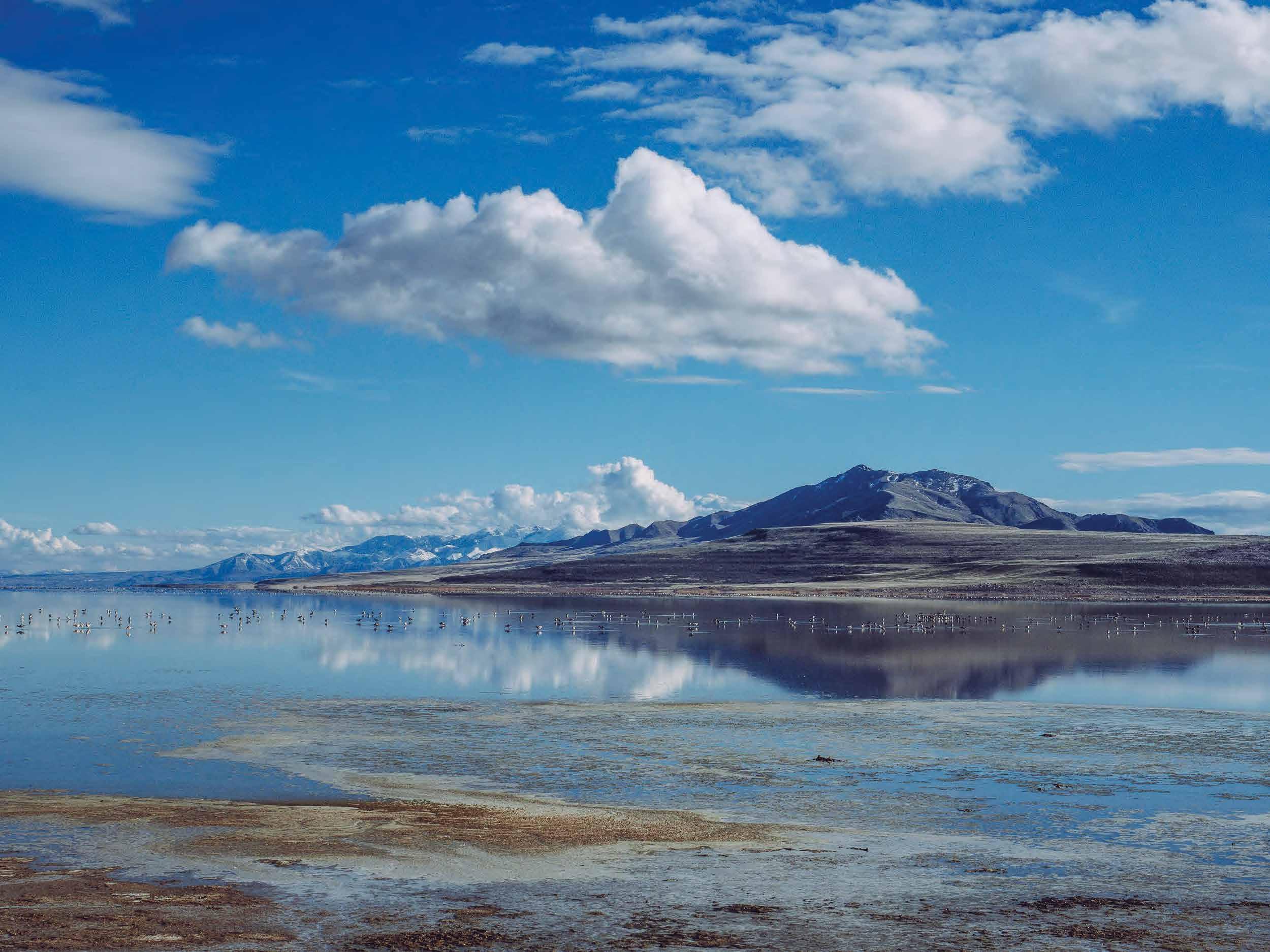
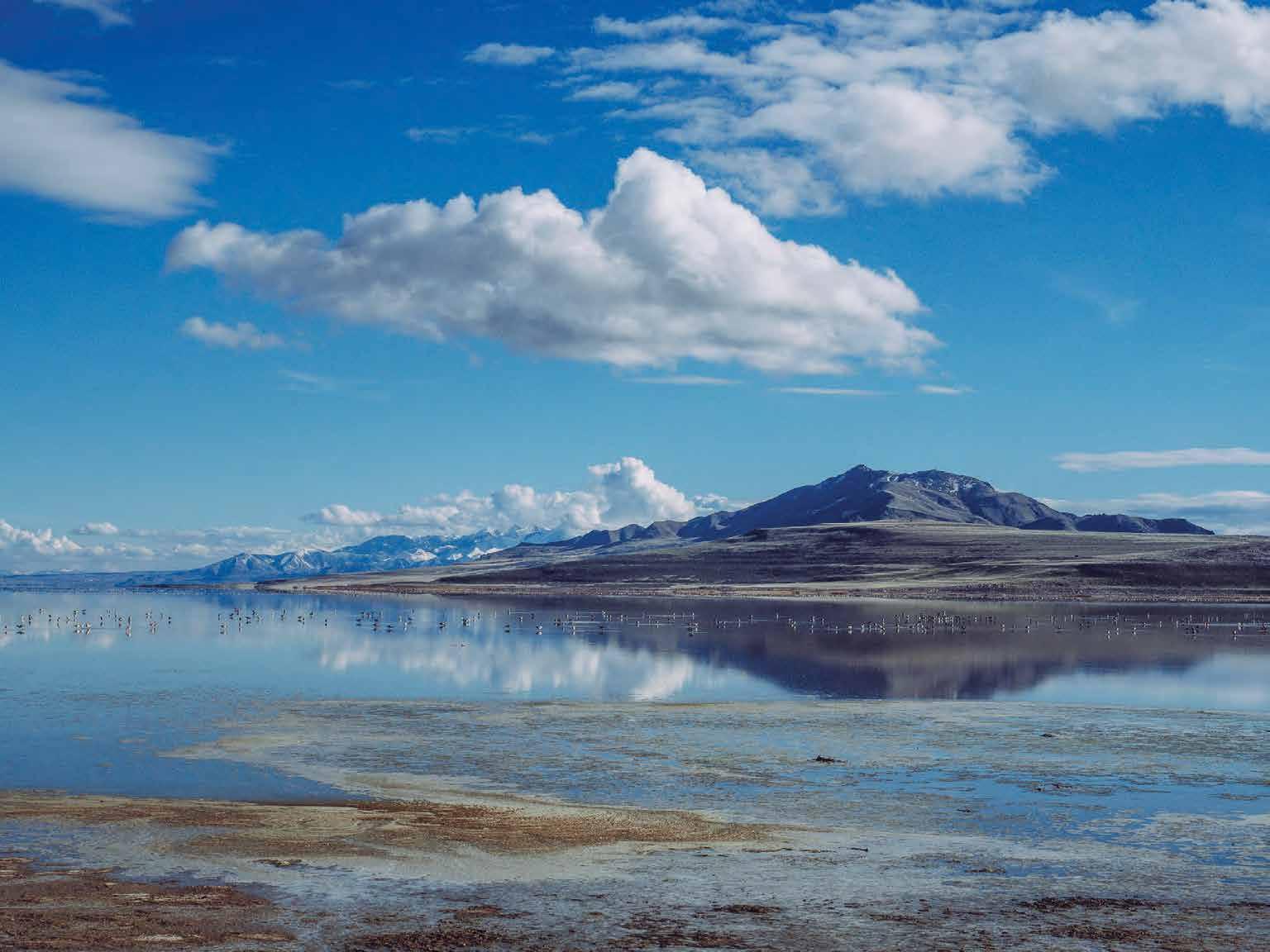



For years “coach Daddy Matty,” as he was called, coached a Junior Jazz team at the Taylorsville Rec Center. Though his own sons were on the team, he was able to impact other kids who benefitted from his service as a volunteer coach. These kids learned how to show respect for others, work hard to achieve goals and be good sports—in both wins and losses. Thanks to the Zoo, Arts & Parks (ZAP) program in Salt Lake County, thousands of young people are able to do programs like this.
You may remember voting on the ZAP tax this past November. It is up for renewal every 10 years and overwhelmingly passed with 79% support, making this the most popular tax we’ve seen in Salt Lake County (if there is such a thing). The amount of the tax is 1/10th of 1% sales tax—one penny for every $10 spent.
The sales tax is collected and the funding is awarded through a competitive grant process to nonprofits and is a key funding source for over 230 organizations including Utah Symphony, Utah Opera, Utah Museum of Fine Arts, Hogle Zoo, and Natural History Museum of Utah, as well as community parks and recreation projects, such as trail systems, playgrounds, amphitheaters and public spaces.
These funds are distributed in the following ways: Approximately 16% of the funds support the three zoological entities–Hogle

Salt Lake County Councilmember|
District 3

Zoo, Tracy Aviary and Living Planet Aquarium. Culture and arts organizations receive 54% of the funds which includes everything from Ballet West to local community theater. It’s pretty incredible that over 200 arts organizations in every area of the county receive seed money. In exchange some of the heavy hitters must maintain robust K-12 outreach, free-day programs and audited financials.
Parks and Recreation make up 30% of the funding. This helps to fund parks, open space, recreation centers and other programming like Junior Jazz.
The ZAP tax is collected from retail sales throughout the county and has proven to be a unique way for tourism dollars to benefit Salt Lake County residents. We love it when people visit our county—they spend money here, contributing to our sales tax base, but then they


leave and we don’t have to pay to educate their kids or provide other services for them.
The ZAP tax was introduced by the Utah State Legislature in 1996 and has been renewed four times since its initial approval with overwhelming support.
The ZAP distributions have proven to be more than just an investment in culture and the arts. It’s also a powerful driver of our local economy. According to the Kem C. Gardner Policy Institute, Salt Lake County collected $36.7 million in ZAP revenue in 2023. That funding supported organizations that employ nearly 15,000 people and welcomed over 11
million visitors to in-person events and services each year.
Few places in the country have a sales tax program like ZAP. It’s a local tax with local control, meaning every penny stays in Salt Lake County and is distributed by local decision-makers with community input.
ZAP is a unique way to collect and distribute funds that enhance quality of life for Salt Lake County. So next time you attend community theater, a Junior Jazz game, or visit the zoo, know that your tax dollars are hard at work and paying off in a big way to make our county a great place to live.































Remembermaps? Old-fashioned, fold-out paper maps the size of a beach towel? My husband wanted to buy one to navigate our road trip through the Sacramento Valley. I stared at him for 47 seconds before stating, “We have Google Maps.”
“It’s not the same thing,” Tom said, sadly. I reminded him I have the orienteering skills of a baby sea turtle running away from the ocean. Handing me a paper map is the equivalent of asking me to decipher ancient Egyptian. Although, to be fair, Google Maps can be equally confusing. Don’t tell me to turn left in 450 feet. That means nothing to me. You might as well say, “Turn left after 850 toothbrushes.”
Unfortunately for him, there were no road maps to be found. So, with phone in hand, I guided us through Chico, Stockton, Napa Valley and Yosemite. I don’t know which direction we drove. North? West? Up? Sideways? Sure.
Road trips should be a great time to catch up on my reading, but Tom doesn’t know how to sit in silence for longer than 1.3 seconds. Even though he hasn’t lived in California for decades, he had a story to share about every city we passed.
“About 15 years ago, there was a serial killer arrested in Yuba City,” he said. “Look it up.”
I put my book down and switched my phone from Google Maps to Wikipedia to learn about the murderer, Juan Corona. But, dear reader, he was arrested in 1971. Just a touch

more than 15 years ago.
Tom can hold a conversation with himself for at least 30 miles. It’s a stream of consciousness speaking that is amazing to behold. Let me give you an example:
“This is a great Glen Campbell song. Jimmy Webb wrote a lot of songs for Glen Campbell. Did I tell you Merrilee Rush was the first musician I saw perform live? Can you find yacht rock on the radio? Where does that driver think he’s going? Move over, scumbag! I’ve never been to Yosemite. I’ve heard it’s hill-arious.”
When I noticed a line of cars on our bumper, I suggested he drive a bit faster, although he insisted he was going the exact speed limit. I told him that was the problem.
Remember when you taught your kids to drive and you kept pushing an imaginary brake pedal on the passenger side of the car because you thought your teenager was going to drive you into a building? Well, I have an imaginary accelerator on my side of the car that I press when Tom’s going the exact speed limit.
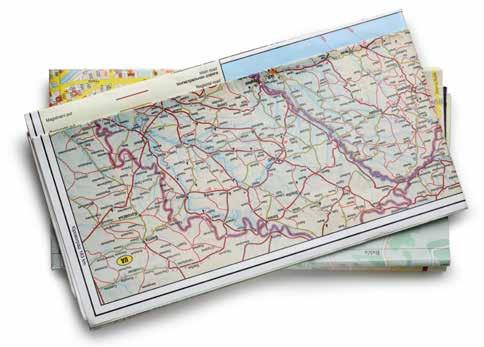
But once we hit Yosemite, or any mountain range, my husband turns into Dominic Toretto of “Fast and Furious” fame, Tokyo-drifting off cliffs and taking corners at the speed of sound. I was grabbing the door handle, not sure if I was trying to keep it closed or if I was preparing to jump out if we launched into Yosemite Valley.
On our way through wine country, we stopped at the Napa Valley Welcome Center to get ideas for which wineries to visit and where to get a good Chardonnay. The woman at the counter whipped out a map of the area. Tom’s
eyes widened with glee. He used so many exclamation points, I thought his heart might burst with joy.
“Look!” he said. “She has a paper map! Cartographers really know how to draw the line!”
We did a lot of driving in California, which could be considered relationship bonding or time served, depending on the situation. Tom still swears by paper maps. I’m dedicated to Google. But we always find our way.


































